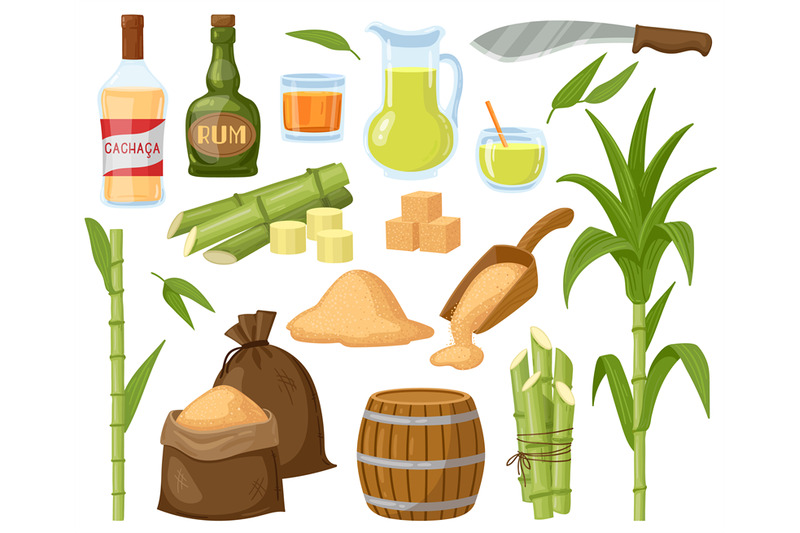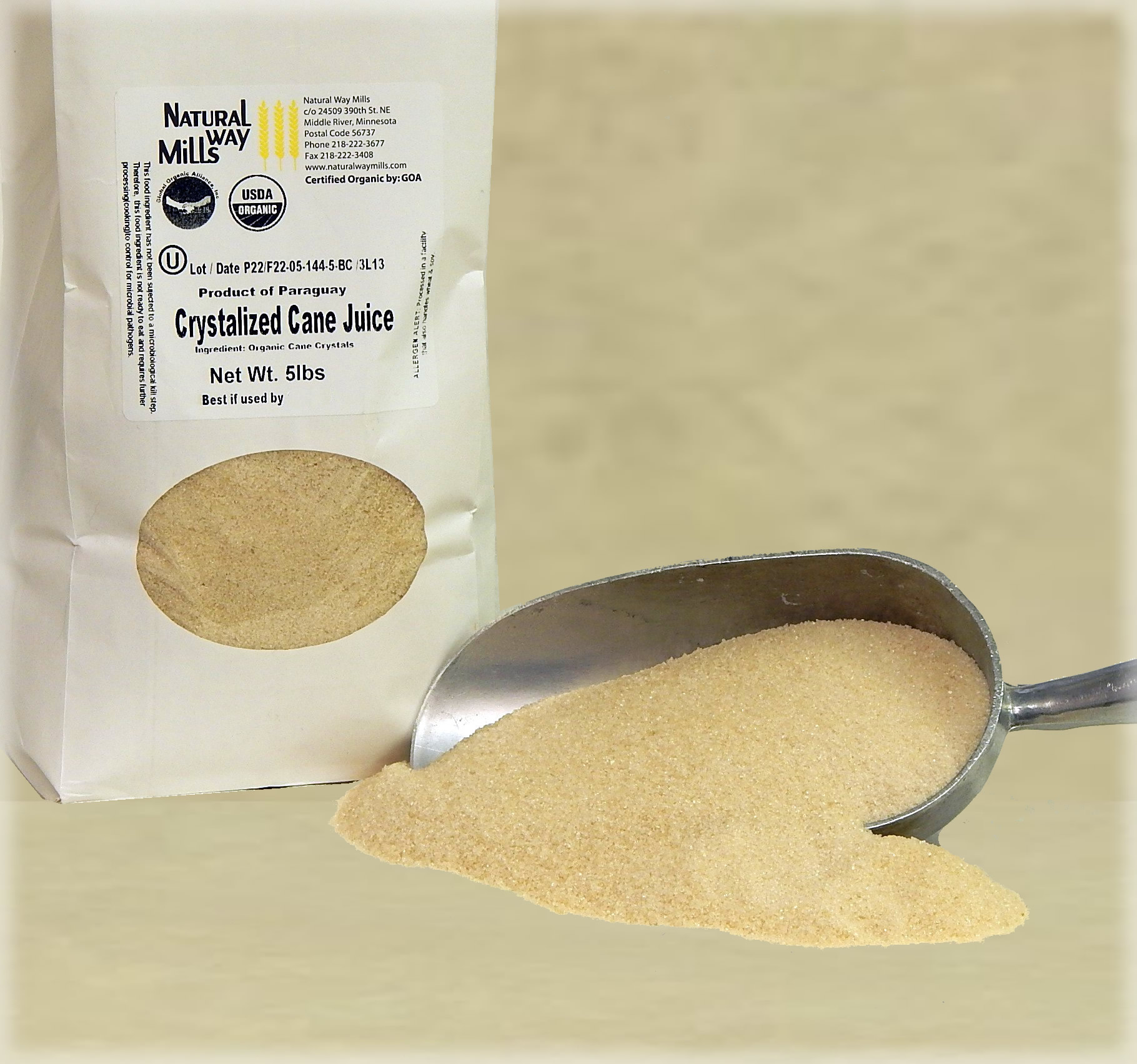New sugar cane products That Are Shaping Global Agriculture
Wiki Article
Unveiling the Manufacturing Keys Behind Sugar Cane and Its Diverse Variety Of Products
The manufacturing journey of sugar cane is elaborate and multi-faceted. It starts in the fields, where mindful harvesting methods set the phase for optimal sugar extraction. The process entails a number of stages, consisting of juice extraction and refining - sugar cane products. Sugar cane's potential expands far past mere sweetness. Technologies in processing and sustainable techniques are reshaping its function in contemporary sectors. What lies ahead for this versatile crop? The responses might surprise those thinking about its futureThe Trip of Sugar Cane: From Area to Factory

As sugar cane sways delicately in the tropical breeze, it starts a transformative trip from area to factory. The dynamic eco-friendly stalks, abundant in sucrose, are grown under excellent problems, gaining from sufficient sunlight and rainfall. Farmers thoroughly keep an eye on the development, making certain the plants reach their peak maturity, which is crucial for making the most of sugar content.Once matured, the cane is gotten ready for harvesting, where its fibrous structure holds the pledge of wonderful products. The journey continues as the stalks are transported to processing facilities, where they undertake a collection of precise steps. At the manufacturing facility, the cane is washed, shredded, and pushed to remove the juice. This juice is after that made clear and vaporized, leading the way for formation. Each stage of this journey is crucial, as it inevitably establishes the top quality of the sugar and various other products acquired from this functional plant.
Gathering Methods: The Initial Step in Production
Collecting sugar cane needs precision and ability, as the timing and strategy directly affect the top quality of the end product. The procedure typically begins with determining the ideal harvest, which is important; sugar web content peaks prior to the plant reaches complete maturity. Farmers usually rely upon experience and agricultural indications to make a decision when to harvest.Two main strategies dominate the collecting landscape: handbook and mechanical approaches. Hands-on harvesting, though labor-intensive, permits cautious selection of stalks and decreases damage. Employees use machetes to reduce the cane near to the base, making sure the stalks remain intact for processing.Mechanical harvesting, on the various other hand, utilizes specific equipment to cut and accumulate the cane rapidly. While this approach significantly enhances effectiveness, it may bring about greater degrees of debris and reduced sugar content. Eventually, the picked technique influences not only the amount yet likewise the top quality of sugar cane delivered to processing centers.The Removal Refine: Unlocking the Sweetness
The removal procedure is vital for transforming collected sugar cane right into sweet juice. Different approaches of juice extraction can significantly influence the high quality and return of the final item. Comprehending these strategies is vital for taking full advantage of the advantages of sugar cane manufacturing.Harvesting Methods Clarified
Releasing the sweet taste of sugar cane begins with accurate harvesting methods that assure optimal return and quality. The procedure generally includes reducing the cane at ground degree, ensuring minimal damage to the plant and allowing for regrowth. Harvesters frequently use machetes or specialized machines, depending on the scale of the operation. Timing is vital; harvesting takes place when the sugar web content reaches its optimal, generally throughout dry seasons. Additionally, workers must be educated to recognize the ideal stalks, preventing those that are as well old or diseased. Efficient transportation to refining facilities is additionally crucial, as hold-ups can cause sugar deterioration (sugar cane products). These precise techniques inevitably lay the foundation for creating premium sugar and its diverse by-productsJuice Extraction Approaches
Juice removal is a vital step in transforming sugar cane right into its pleasant essence. This process usually involves a number of methods, each made to successfully extract the sweet liquid from the coarse stalks. One of the most common strategy is milling, where the sugar cane is smashed between hefty rollers to release the juice. Another approach is diffusion, which uses hot water to dissolve the sugar from the cane fibers, making it a much more reliable option for massive operations. In addition, some producers utilize screw presses, which apply mechanical stress to essence juice. After removal, the juice goes through information to get rid of pollutants prior to further processing. Each technique reflects the market's concentrate on optimizing return and making certain premium sugar production.Refining Sugar: Transforming Raw Cane Into Granulated Gold
The refining procedure is necessary for converting raw cane sugar into the pure, granulated item consumers acknowledge. sugar cane products. This includes a series of extraction and purification steps to eliminate contaminations, followed by condensation and drying out techniques that improve the sugar's quality. Understanding these approaches exposes the elaborate makeover from cane to the gold granules that sweeten numerous foods and beveragesRemoval and Purification Refine
A crucial phase in the sugar manufacturing trip entails the removal and purification of juice from freshly harvested sugar cane. This process begins with squashing the cane to release its pleasant juice, usually making use of huge rollers or mills. The extracted juice consists of not just Get More Info sugar yet additionally impurities, consisting of fibers and mud. To guarantee the juice is suitable for further refining, it undergoes a filtration procedure. This involves passing the juice via numerous filters and clarifiers to get rid of strong fragments and undesirable products. Chemicals such as lime may be included in aid in the explanation procedure. The outcome is a clear, raw cane juice that offers as the structure for creating refined sugar, ready for succeeding phases of handling.
Formation and Drying Out Strategies
After the extraction and purification processes produce clear raw cane juice, the next action in sugar manufacturing is crystallization. This procedure includes steaming the juice to evaporate water, permitting sugar molecules to create crystals. As the liquid thickens, it gets to supersaturation, triggering sugar to take shape. The mix is after that cooled, advertising further crystal development. As soon as crystallization is complete, the sugar crystals are divided from the continuing to be syrup with centrifugation.The last entails drying, where the crystals are subjected to cozy air to get rid of residual wetness. This action is crucial, as it ensures the product accomplishes the desired granulation and shelf security. The result is pure, granulated sugar, all set for product packaging and distribution.Past Sweetness: Diverse Products From Sugar Cane
While sugar cane is largely acknowledged for its pleasant flavor, its convenience extends much past mere sweetness. This resilient plant acts as the source for a myriad of products that provide to diverse markets. Ethanol, acquired from sugar cane fermentation, plays an important function in eco-friendly energy, serving as a cleaner option to nonrenewable fuel sources. Furthermore, molasses, a result of sugar refining, is utilized in animal feed, along with in cooking and fermentation processes.Sugar cane's fibrous residue, referred to as bagasse, is not wasted; it is transformed into eco-friendly packaging materials and functions as a biomass gas resource. Furthermore, different sugars and syrups acquired from sugar cane discover applications in the food and beverage industry, adding to flavoring and preservation. The plant's fallen leaves can be utilized for thatching, while its juice is taken in as a renewing beverage in several societies. Sugar cane exemplifies farming capacity beyond its sweet credibility.Innovations in Sugar Cane Handling
As developments in technology proceed to reshape different markets, sugar cane processing is experiencing a substantial improvement. Modern developments, consisting of automated harvesting and precision farming, are enhancing performance and yield. Drones and sensing units keep track of plant wellness, allowing farmers to enhance irrigation and nutrient application, eventually improving productivity.In processing centers, cutting edge equipment and equipment enhance operations. Advancements such as chemical processing and progressed purification methods boost the extraction of sugar while lessening waste. On top of that, the fostering of real-time data analytics makes it possible for makers to monitor procedures closely, making certain high quality control and reducing downtime.Biotechnology is additionally playing a crucial duty; genetic engineerings improve sugar cane's resistance to insects and ecological stressors. These improvements not only contribute to greater sugar yields however additionally help with the manufacturing of varied by-products from the cane, expanding its industrial applications. In general, these advancements are leading the way for an extra reliable and lasting sugar cane handling industry.The Future of Sugar Cane: Sustainability and Bioproducts
The future of sugar cane production is increasingly intertwined with sustainability and the development of bioproducts. As global demand for environmentally friendly options increases, the sugar cane market is pivoting towards practices that minimize environmental impact. Innovations in cultivation strategies, such as accuracy agriculture and integrated pest management, purpose to boost return while minimizing resource consumption.Furthermore, sugar cane is being checked out as a raw product for biofuels, bioplastics, and various other lasting items. These bioproducts not just use an eco-friendly alternative to standard nonrenewable fuel sources and plastics but additionally add to a round economic situation by making use of waste materials.Research and advancement in biotechnology are paving the means for improved sugar cane ranges that require much less water and fertilizers, further advertising sustainability. By accepting these advancements, the sugar cane sector can protect its future while dealing with critical ecological difficulties, showing its prospective as a cornerstone of lasting development.
Regularly Asked Questions
What Are the Ecological Impacts of Sugar Cane Farming?
The ecological impacts of sugar cane farming consist of deforestation, dirt degradation, and water contamination. Additionally, using pesticides can hurt biodiversity, while monoculture practices minimize environment strength, presenting long-lasting sustainability obstacles for agricultural techniques.
How Does Sugar Cane Compare to Various Other Sweeteners Nutritionally?
Sugar cane, rich in carbs, provides energy however does not have vital nutrients compared to choices like honey or maple syrup, which provide nutrients. Its high glycemic index additionally elevates concerns over blood sugar spikes.What Are the Health Conveniences of Consuming Sugar Cane Products?
The health and wellness advantages of consuming sugar cane items consist of boosted food digestion, boosted energy levels, and prospective antioxidant properties. Furthermore, home they might sustain hydration and provide important minerals and vitamins, adding favorably to total well-being.How Is Sugar Cane Waste Utilized After Processing?
After processing, sugar cane waste is used in different means, consisting of biofuel production, animal feed, and natural plant foods. This lasting technique lowers ecological influence while taking full advantage of resource effectiveness within the sugar market.What Are the Historical Beginnings of Sugar Cane Growing?

Report this wiki page